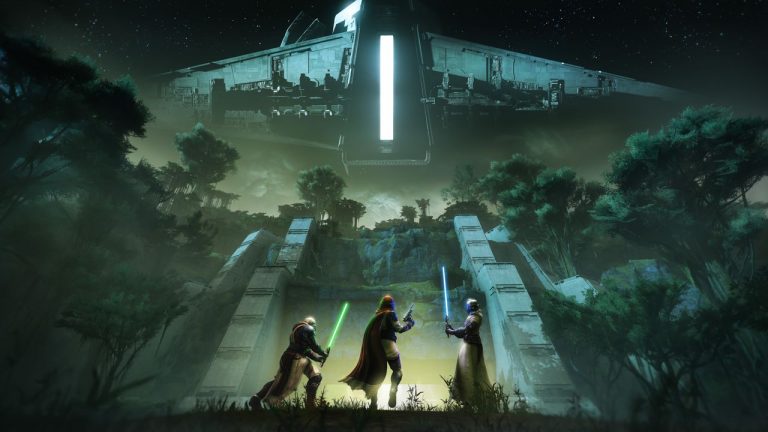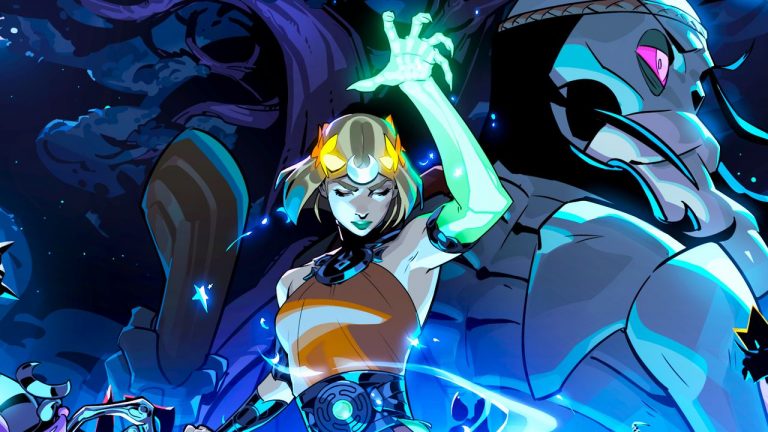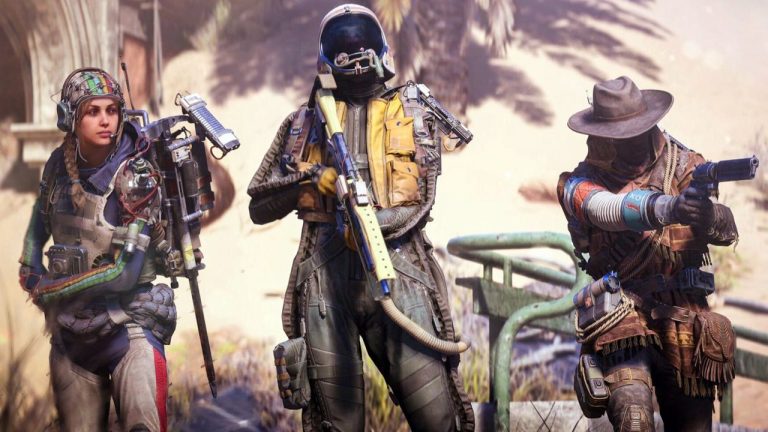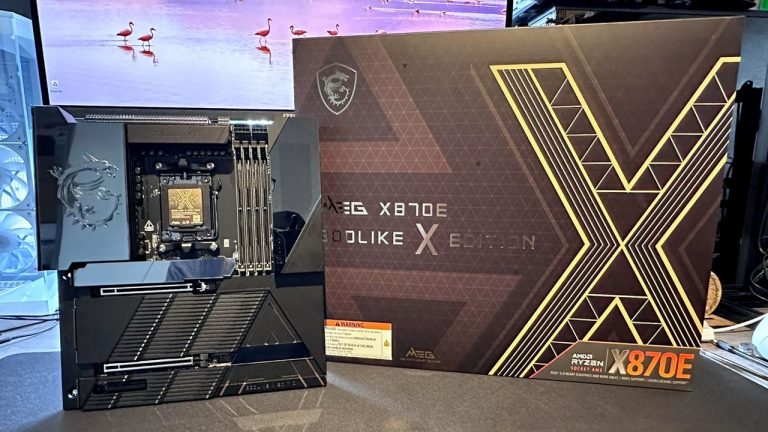(Image credit: BioWare, Electronic Arts)
Dragon Age: The Veilguard review – A great action-RPG that falls short of the storytelling the series is known for.
Dragon Age: The Veilguard performance analysis – Decent frame rates and blessedly glitch-free.
Turn off these graphics settings – Disable DoF, motion blur and vignette in Dragon Age: The Veilguard before changing any other setting.
When BioWare started working on Dragon Age: The Veilguard, the world was in love with Marvel. We wanted more Avengers, more bants, more Nick Fury recruiting super-powered heroes. This must have felt serendipitous to a studio which had, for years, been designing RPGs where players put together a wise-cracking, good-looking squad to stop the world—and sometimes galaxy—from imploding.
Dragon Age: The Veilguard is BioWare’s Avengers, fully leaning into the idea of a heroic team of powerhouses protecting everyone from the worst of the worst—between bouts of exposition and lots of banter, of course. But unfortunately it’s now 2024, the Marvel formula has become exhausting, and BioWare’s latest RPG—which I’m now around three quarters of the way through—feels both perfunctory and behind the curve.
Maybe we would have ended up here even without Marvel’s huge influence on modern entertainment. While the series began as an exceptionally grim fantasy adventure in a grounded medieval world, Dragon Age has never been comfortable sitting still. Dragon Age 2 preserved much of the tone, despite the switch to smaller stakes and a more focused setting, but Inquisition then put you in charge of a high fantasy version of SHIELD in a game full of absurd stakes and magic spectacle.
But it also still felt like a Dragon Age game. A different style of Dragon Age game, sure, but one that still featured nuanced characters who pushed and questioned you, set in a world that, for all its vibrant colours and flashy magic, still felt tragic and sorrowful. It served as an interesting counterpart to Origins, where you played a hero (or anti-hero) trying to thwart a tyrant. As the Inquisitor, there was always the sense that you might become that tyrant yourself. In The Veilguard, however, Dragon Age’s legacy is nearly invisible.
Thedas’s questionable glow up
(Image credit: BioWare, Electronic Arts)
The Veilguard sheds most of the series’ nuance and darkness, fully committing to bloodless, broad high fantasy with a Marvel veneer—less Thesdas and more Asgard. It’s even got that gaudy Marvel colour palette, where everything glows and sears your retinas. It’s all just so over the top—constantly trying to show off and elbow you, forcing you to look at one ostentatious set piece after another.
This perseveres even when The Veilguard impotently attempts to showcase some horror. When you explore a Blight-infested village in an early section, the pulsating neon-red cysts and gratuitous use of tentacles is so cartoonish that it’s impossible to feel the revulsion that the story wants you to experience. The Blight is ultimately left to just become a momentary obstacle, blocking paths until you destroy a bunch of connected nodes. It’s just a mechanical nuisance that rears its head countless times throughout the game.
The Veilguard sheds most of the series’ nuance and darkness.
The Veilguard even takes Marvel’s sci-fi-tinged approach to fantasy. Bellara, your elven archer, swans around with a massive golden gauntlet that splices magic and tech, is a talented engineer, and is part of a mostly-elvish organisation which studies and preserves ancient, arcane technology. Even their name, the Veil Jumpers, feels like something drawn from a sci-fi comic. Where previous games presented the elves as a race brought down by human colonialism, pushed to the fringes and constantly struggling with racism and ostracisation, The Veilguard’s elves are primarily represented by an organisation of fancy magical scientists.
Magic, broadly, has a very different tone this time around. Some of this is down to the switch from southern Thedas to Tevinter and the surrounding areas, where mages have a lot more influence and aren’t kept on a tight leash, as they are in Ferelden. But the loss of tension between mages and Templars is felt keenly, and The Veilguard doesn’t give us anything to fill the gap. Instead, mages are just—like so much in this game—generically cool.
(Image credit: Electronic Arts)
Narratively, there’s not much to them—they’re just another class, and most of the time the only distinction between a mage and a warrior is how they handle in combat, where the former fights like an amalgamation of Iron Man and Doctor Strange, with staffs that might as well be laser cannons and big glowing shields that surround their bodies like a force field. Whenever they pull off some spells, it turns the battlefield into a rave.
There’s just nothing here that feels connected to the grounded world BioWare originally built. One of the first things you see when you start the game is a flying Tevinter citadel, you have to participate in a jailbreak where the prison is under the sea, your HQ sits on a floating island inside the Veil and you’re literally fighting a pair of gods—something everyone largely takes in their stride. There’s nothing inherently wrong with this. Lots of The Veilguard’s elements also exist in Baldur’s Gate 3, the best RPG around, but here it leaves me feeling so detached from the world, and there’s not much actually beneath the spectacle—it’s just vapidly showy.
Let’s use the underwater prison as an example, since it features in both games. Once you arrive in BG3’s Iron Throne via a submersible, you realise you’ve already been discovered by one of your main adversaries—now you have to rescue the prisoners before the trap is sprung, drowning you all. It’s a timed jailbreak where the underwater location is actually important, and even informs the kind foes you’ll encounter. In The Veilguard, on the other hand, the underwater conceit is largely ignored beyond the initial surprise. Once that wears off, you’ll just fight your way through a ruin that looks like any other, defeating the same enemies you’ll have already encountered, only to find the guy you’re trying to rescue is already free. There’s nothing really to it: just a cool idea that goes nowhere.
Teambuilding
(Image credit: Electronic Arts)
And then there’s your companions—not a found-family full of weirdos, but rather a group of highly-skilled individuals recruited for a specific purpose. The very first quest you embark upon sees you recruiting Neve, whose status as a crime-fighting detective places her more in the Justice League pantheon than the Avengers. Following the prologue, you start being handed more quests to build your team—the brilliant engineer, the possessed assassin, the stoic Grey Warden—each of them with a connection to one of the main factions.
This isn’t the first time BioWare’s given us the role of Marvel’s eyepatch-wearing super spy—both Mass Effect and Inquisition tasked you with recruiting operatives with special skills. But it’s perfunctory and mechanical this time around. You’re not a military officer or the commander of a crusading order—you’re just some rando that Varric picked up a year ago. This might be the most efficient way of putting together a team, just pointing you in a direction where you offer someone a job, but it’s so rushed, just like the relationships themselves. It feels like you’ve been handed a script and must now pretend to be BFFs with these people you just met.
Each companion can be effectively described with a couple of keywords. OK, maybe I’m being unfair here. I could say the same about a lot of other BioWare companions. Liana the naive scientist, Isabella the horny pirate, Morrigan the abrasive witch—but the problem with The Veilguard is that the keywords are both the start and end of most of these characters. Like so much of the game’s cast, from its villainous gods to its staid faction representatives, the companions rarely deviate from their broad archetypes.
(Image credit: Electronic Arts)
Emmrich plays against type, as a warm, kindly necromancer, and Taash’s struggle with gender and identity is a novel story for a fantasy RPG, but aside from a couple of standout moments, the crew feels like a bunch of made-to-order companions. They’re designed for a specific purpose: to help you save the day and occasionally solve some environmental puzzles with their unique abilities. Where are my chaos goblins and my arseholes and my left-field picks? My Seras and Morrigans and Shales? Where’s my friction? There just isn’t any.
Going back to the Avengers, Marvel had to make it completely clear who all these characters were as quickly as possible because it had about two hours to get you to give a shit about this ensemble cast. They had to be broad and make their intentions and motivations clear from the get go. Not very subtle, but at least understandable. It’s a bit more jarring in an RPG that will take you at least 40 hours to complete.
The Veilguard’s cast largely just tells you their whole deal from the outset. Lucanis is literally an abomination, something that you might expect him to want to keep secret from his new friends, but you discover his nature before he utters a single word. He’s an open book. And while his nature causes a wee bit of tension, it’s mostly short-lived and extremely polite. Bellara, meanwhile, spends maybe 10 seconds pretending that her backstory is too sad to talk about, before giving an entire monologue about her tragic past, why she does what she does, and what’s motivating her to help you on your quest.
Sweet nothings
(Image credit: BioWare, Electronic Arts)
And don’t get me started on the romance dialogue. If you choose to do some very light flirting with a character once or twice, the game tries to fast track you into a relationship—complete with all the cliches. In a single hour I had not one but two stammering, bashful romantic encounters that turned the game into an antediluvian romcom. You know the ones: the “It’s a date… no, I mean, not a date date” variety. There are some solid romantic encounters, eventually, but you have to trudge through a lot of rote rubbish to see them.
The Veilguard tries to create funny, silly, awkward and sincere conversations—the kind you’d have with your pals or potential partners—but it just spits them out so rapidly, and with so many cliches, that I started to dread my post-adventuring downtime, where I’d need to go from room to room having uninspired chats with some very nice but very boring people. That’s ultimately The Veilguard’s biggest stumbling block when it comes to the companions: they are simply good people. Thoughtful, open-minded, friendly—great for a group of mates, not so great for a story-driven RPG.
There are some solid romantic encounters, eventually, but you have to trudge through a lot of rote rubbish to see them.
In Origins, you had Alistair and Morrigan constantly winding each other up, in Inquisition you had Solas lecturing you and being disappointed that it wasn’t sinking in, and in BG3 you literally have companions trying to murder each other—conflict adds texture to an adventuring party. Heck, even the Avengers ended up fighting each other in Civil War. But the Veilguard gives you friendly automatons with very little agency, which makes any relationship you build with them feel hollow.
I’m not really feeling very connected to my version of Rook, either. Though maybe “my version” is the wrong phrase. BioWare has stuck with the system it introduced in Dragon Age 2, where your responses are all clearly connected to a specific type or personality style or emotion—snarky, aggressive, positive, upset, that sort of thing. Despite being a bit limited, the system has worked well in the past, but this time it seems impossible to develop a character who isn’t just a very brave, very generic hero. Maybe yours will be slightly gruffer, or a bit more sarcastic—but not that much. No matter what options you pick, it’s going to sound broadly like something a hero would say. Actually impactful choices, meanwhile, are few and far between, offering no real opportunities to take Rook in different directions. You might as well be Captain America.
(Image credit: Electronic Arts)
Inquisition was already going in this direction—you’re always being nudged towards heroism—but The Veilguard completely ties your hands for most of the game, and the lack of proper roleplaying is so much more noticeable due to the other RPGs that have appeared in the interim. Pillars of Eternity, Tyranny, Pathfinder, Rogue Trader, Disco Elysium, Divinity: Original Sin, Baldur’s Gate 3, The Witcher 3, Cyberpunk 2077—they’ve all felt like progress, leaving Dragon Age behind.
Pillars, Pathfinder and Rogue Trader all build on the legacy of the Infinity Engine games of BioWare’s past, but they bump up the flexibility and character development potential considerably. Tyranny and Disco are more cerebral, experimenting with how RPGs handle the complexities of ethics and philosophy, ultimately letting players make choices that eschew the genre’s conventions. Divinity and Baldur’s Gate smash sandboxes and CRPGs together, giving us RPGs that boast the unparalleled permissiveness of their tabletop counterparts. The Witcher and Cyberpunk raise the bar for quest design and storytelling, showing us that expensive and flashy blockbuster RPGs can still be smart and evocative.
What does The Veilguard do? It is a polished and competent BioWare action-RPG that follows a safe, conventional pattern. The old BioWare magic has been codified and sanitised, and now feels dated—even more so than BioWare’s actually pretty old RPGs. It is as broad, predictable and inoffensive as a crowd-pleasing Marvel movie, all flashy, clean and easy to digest; so it has the power to be entertaining, but never in a way that will stick with you. There are no big swings, no risks, no shocks, and while I have enjoyed some of it, for most of my fourth trip across Thedas I’ve been left pretty bored.










